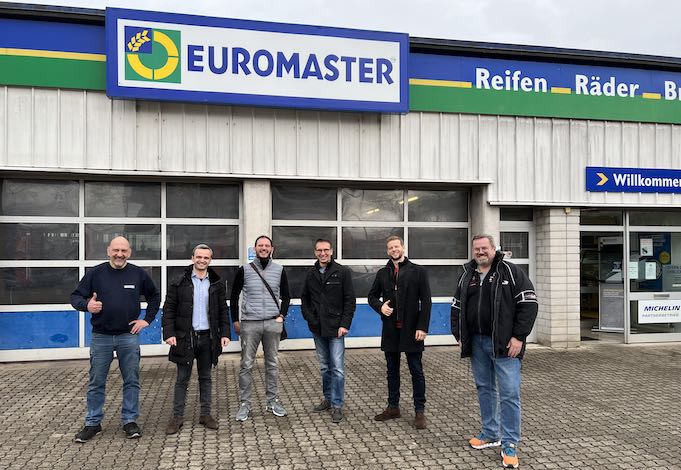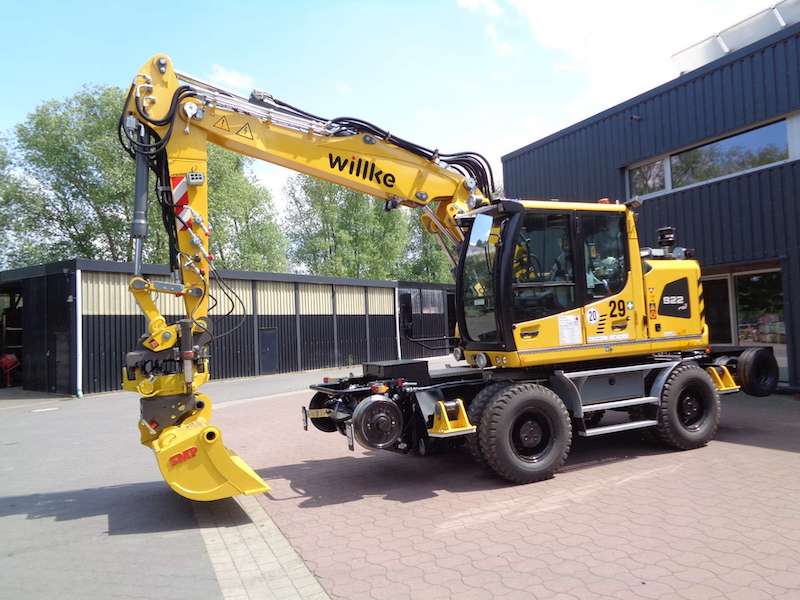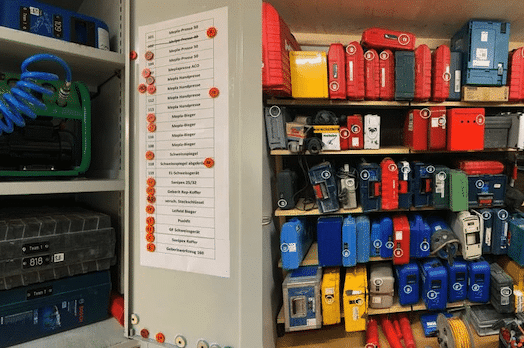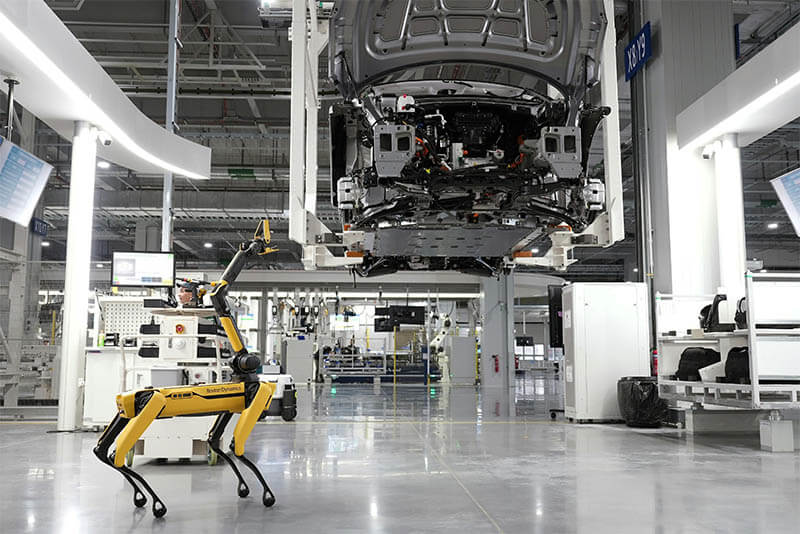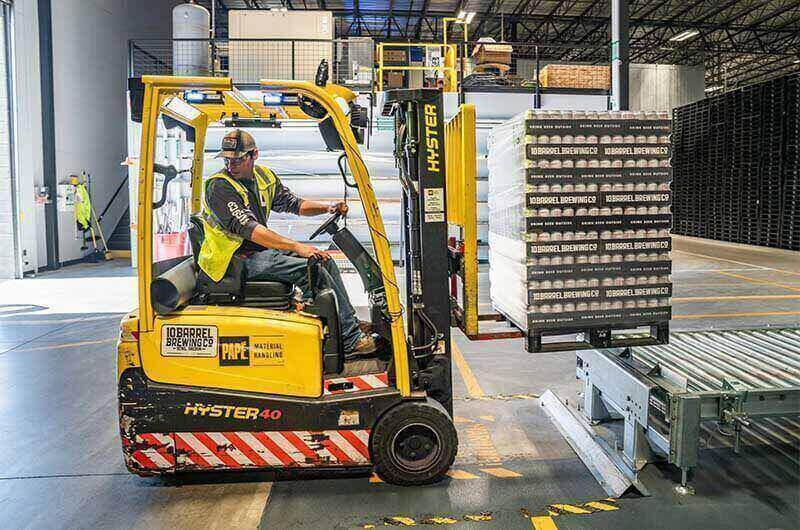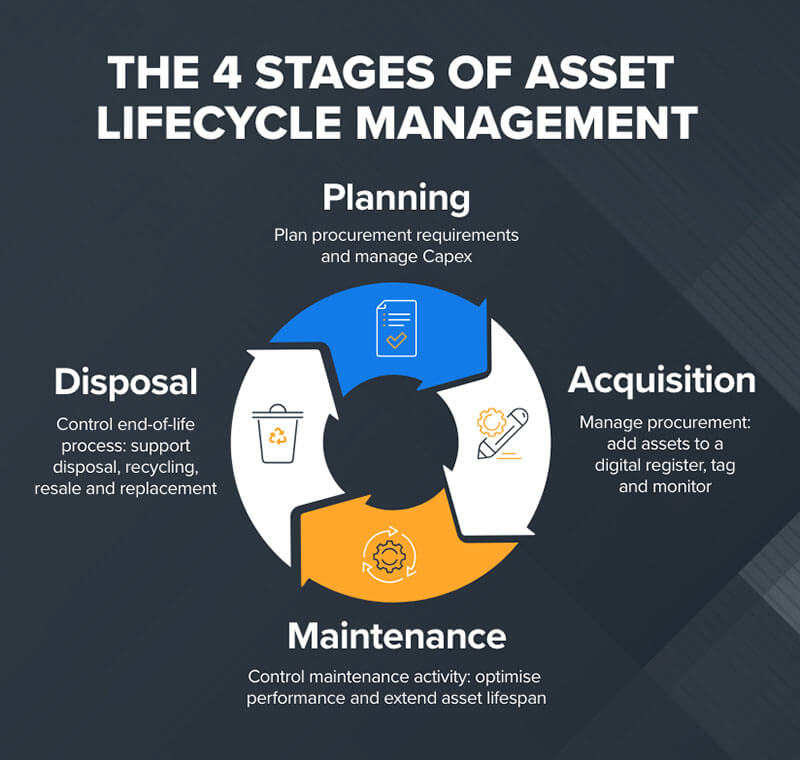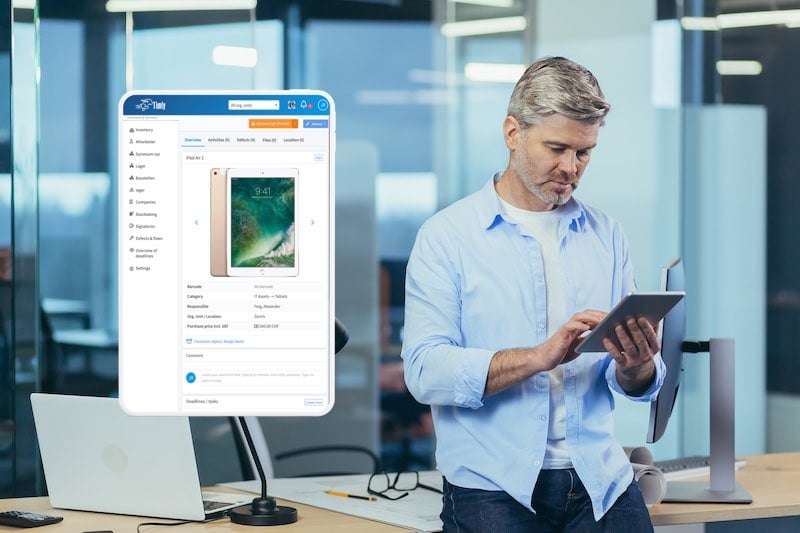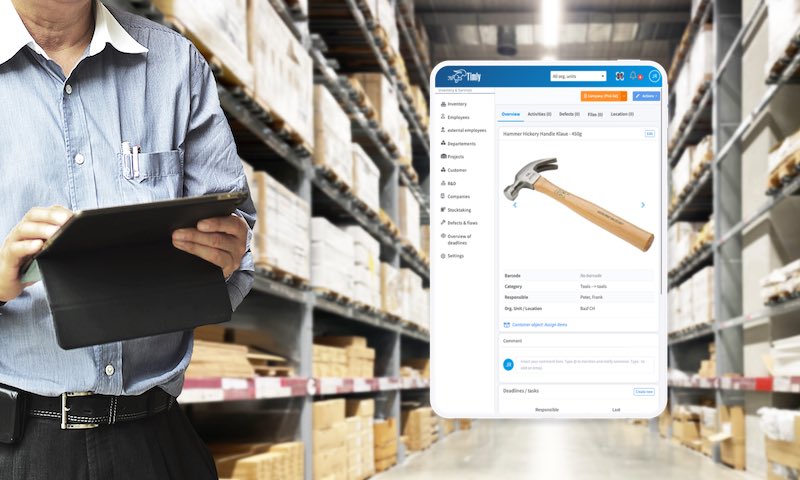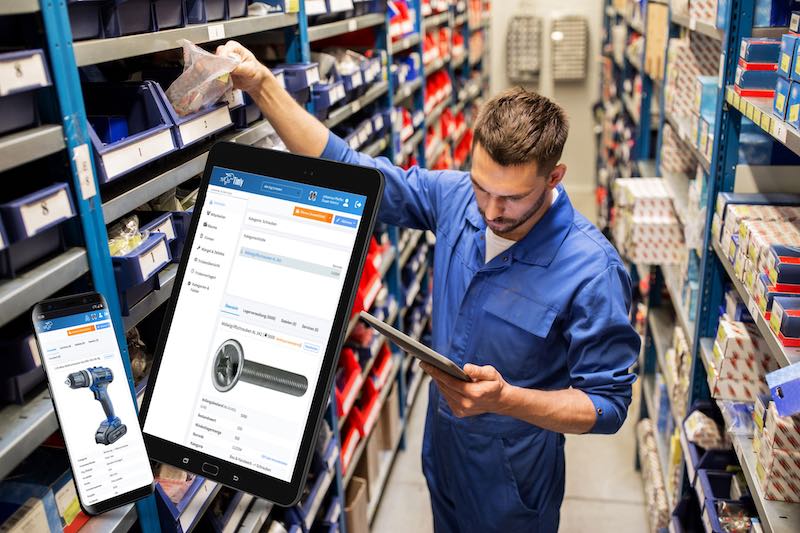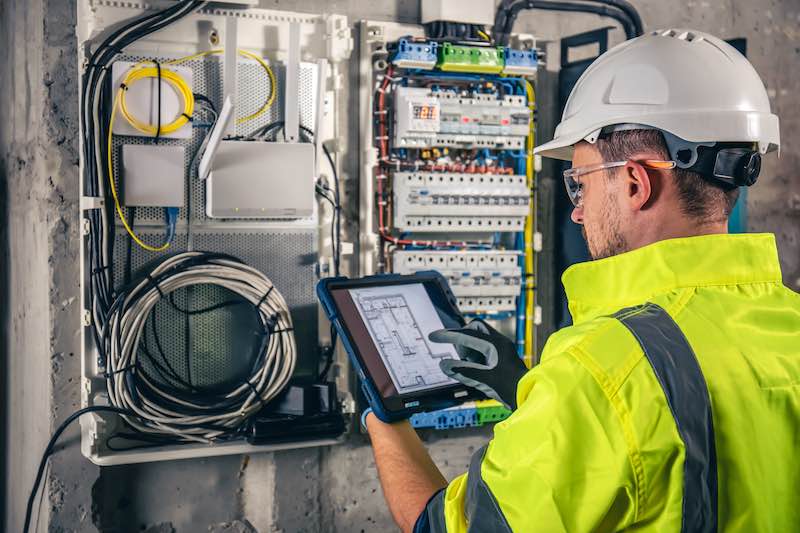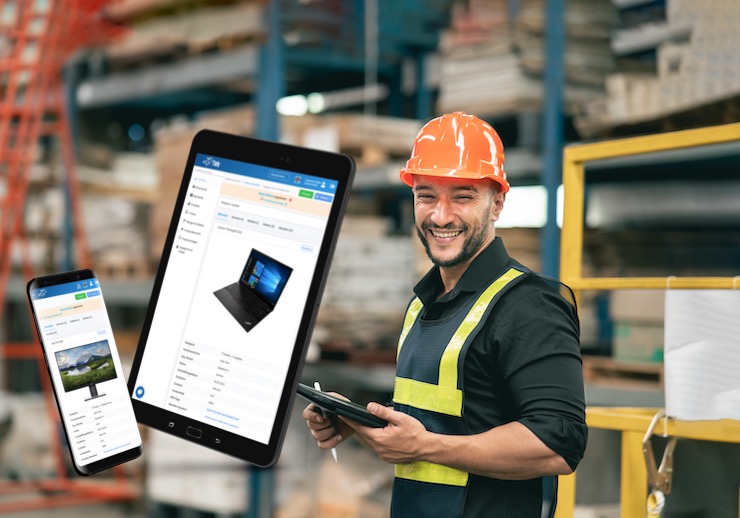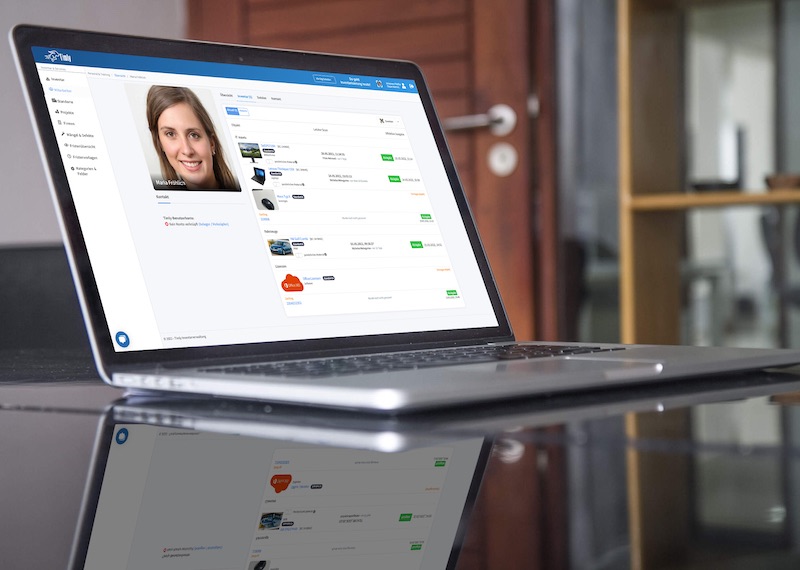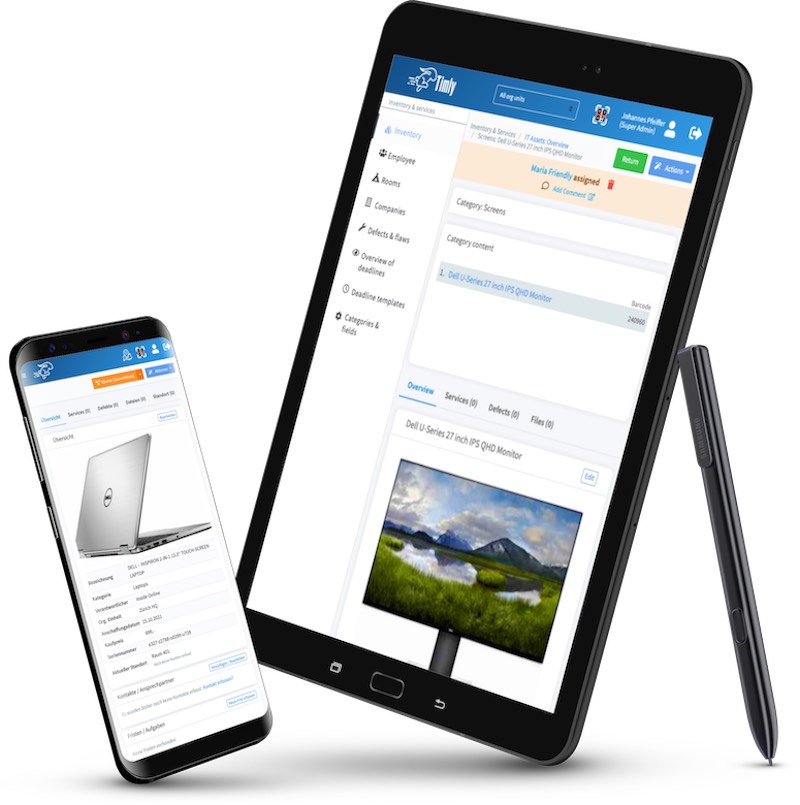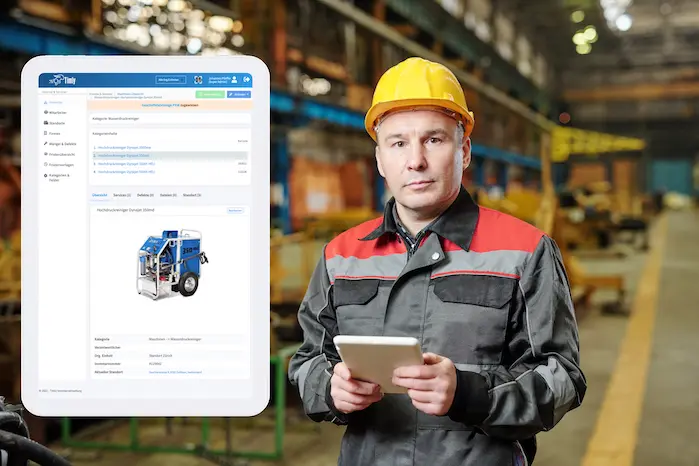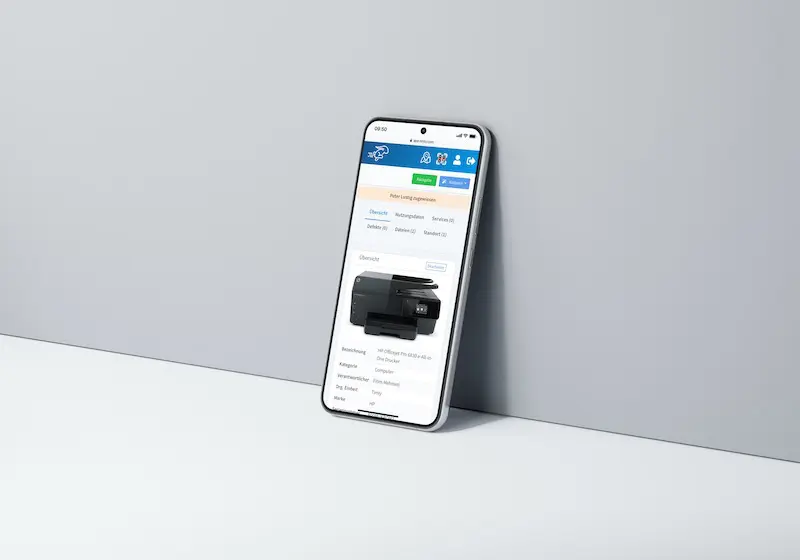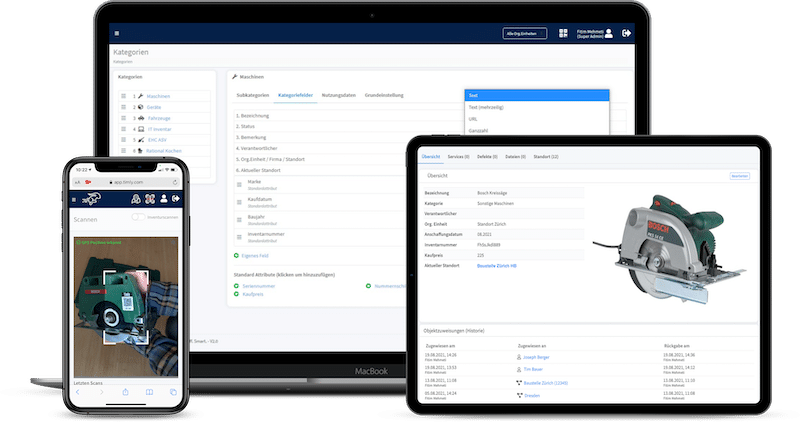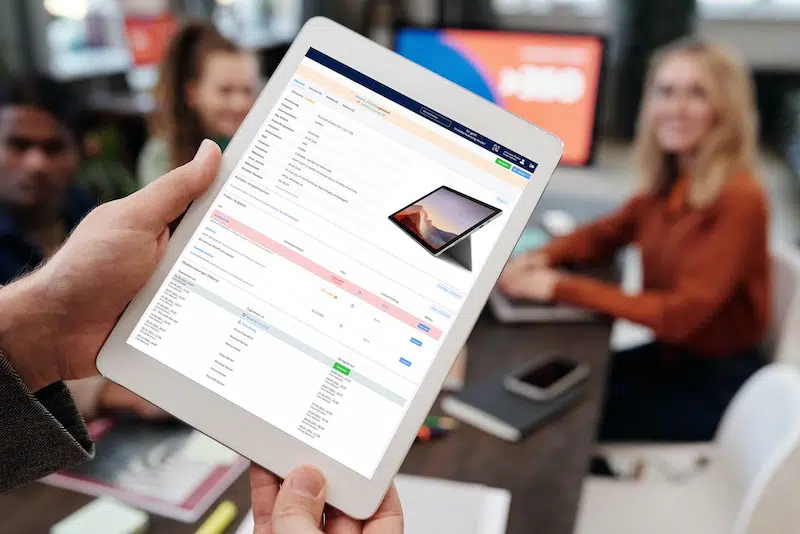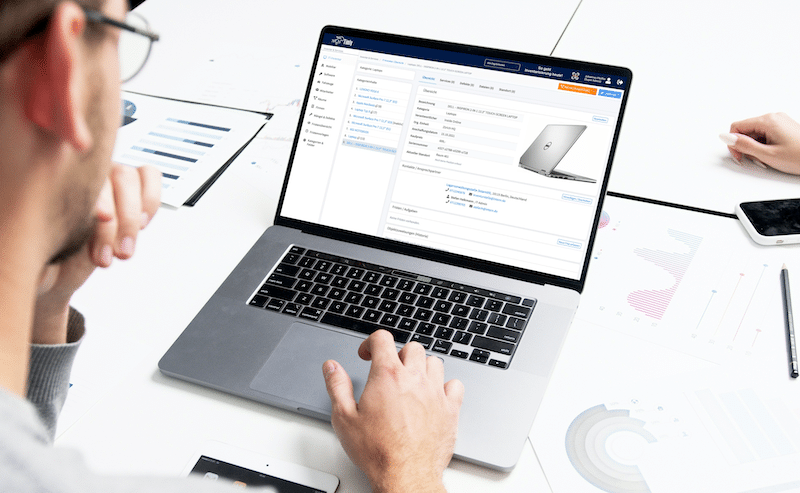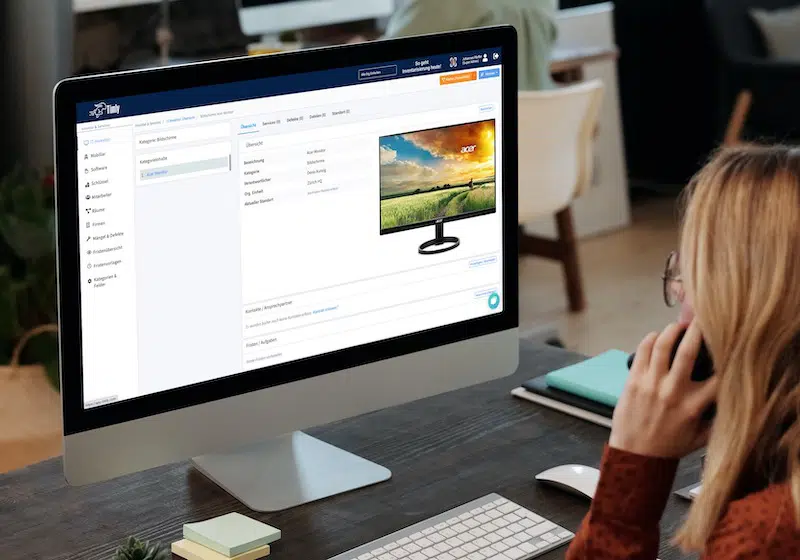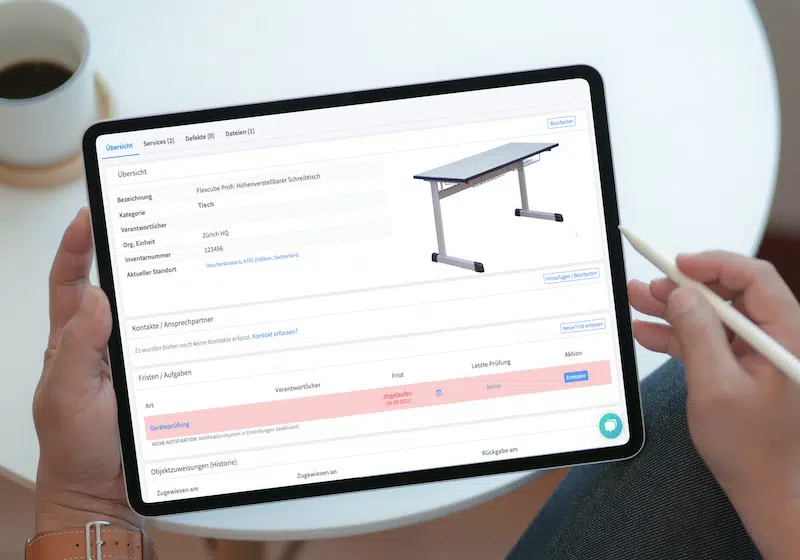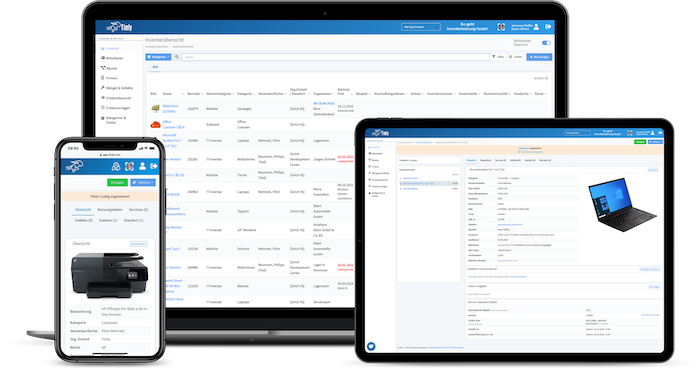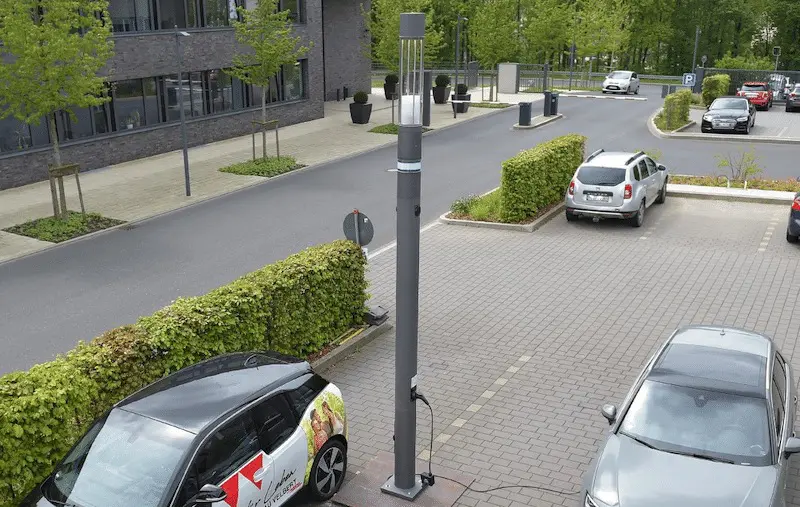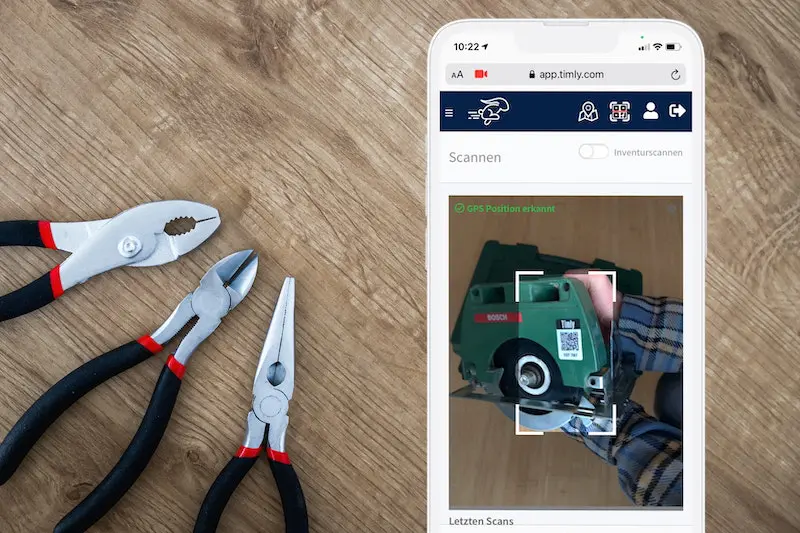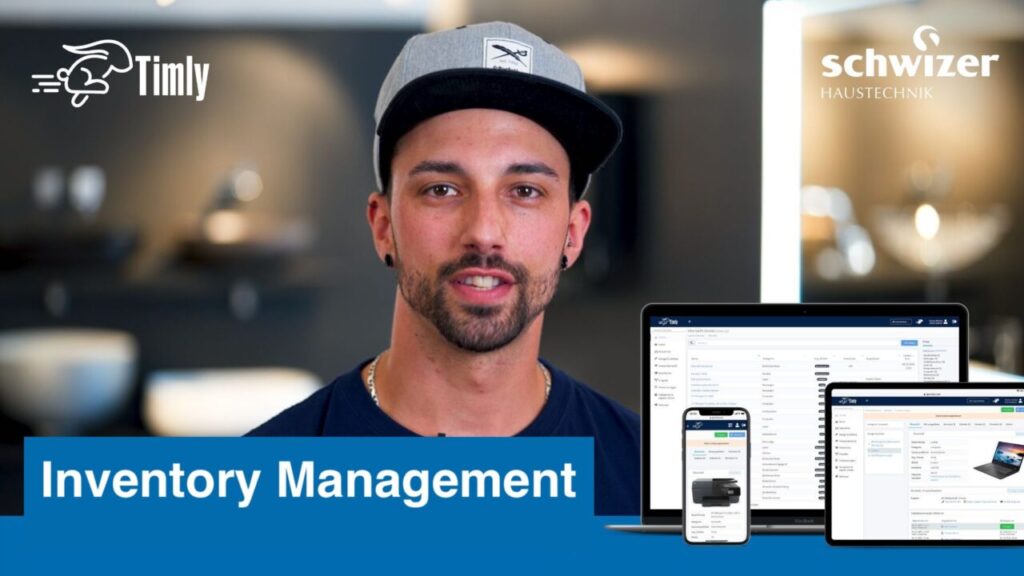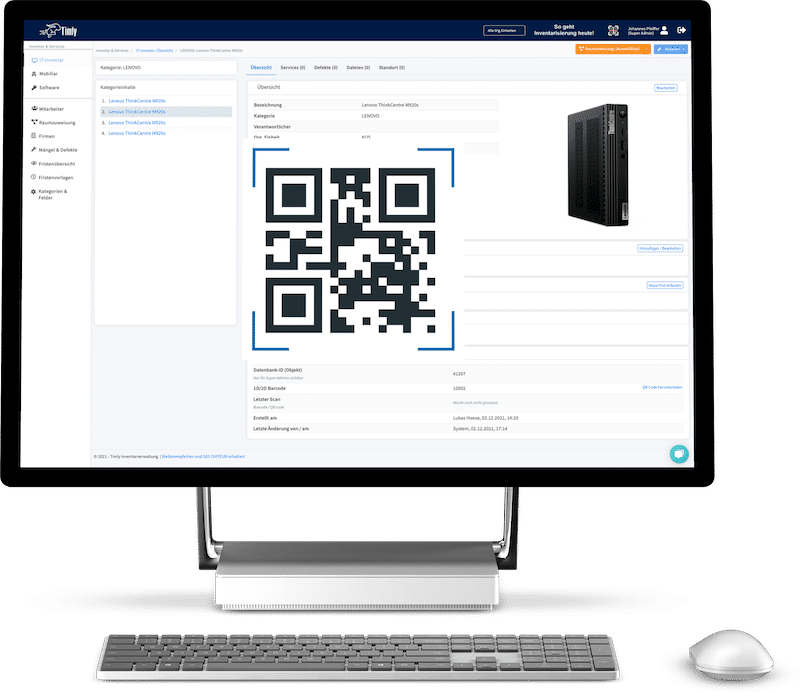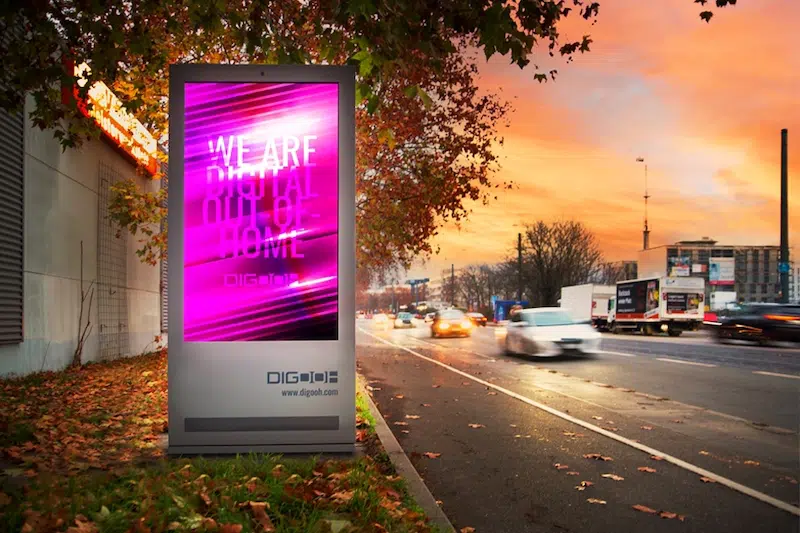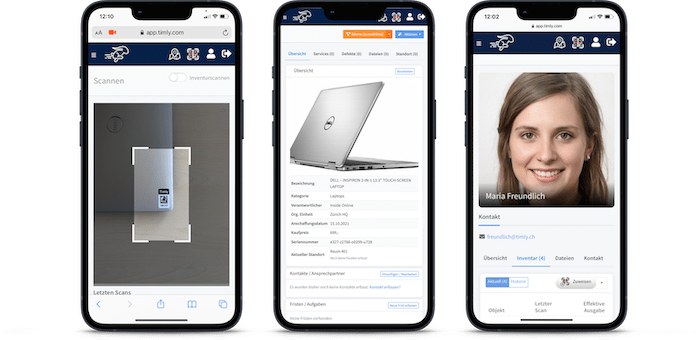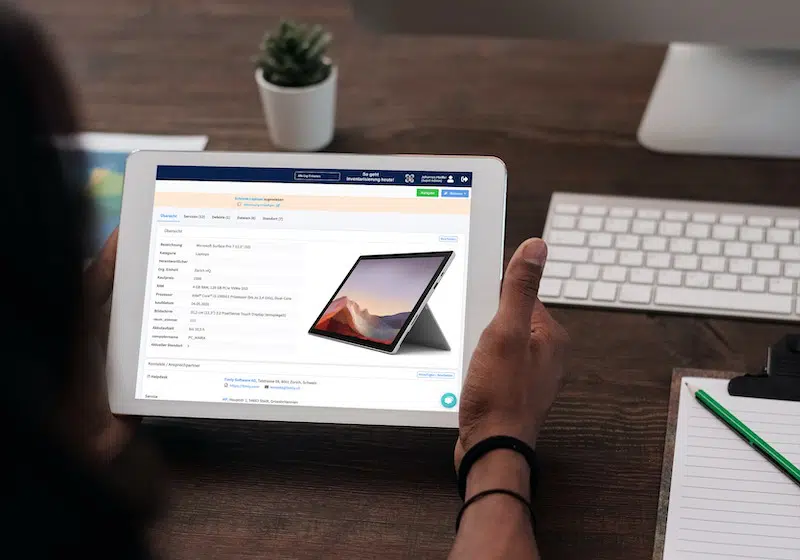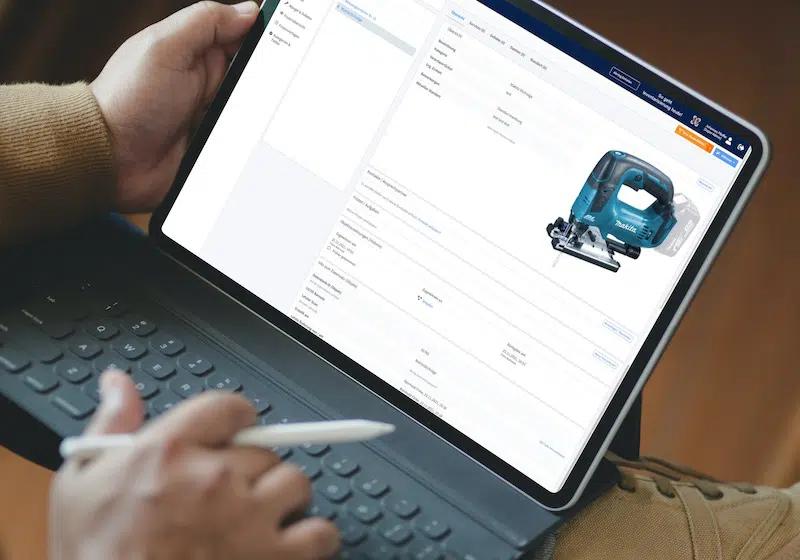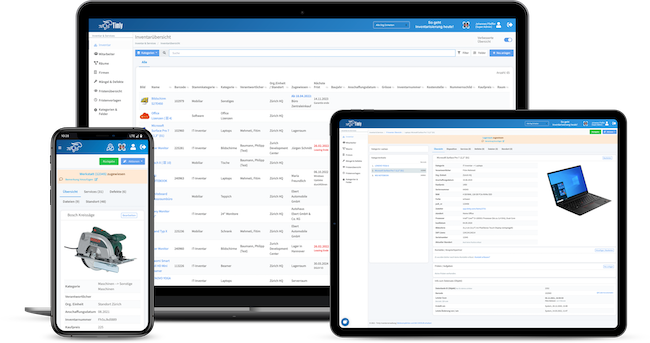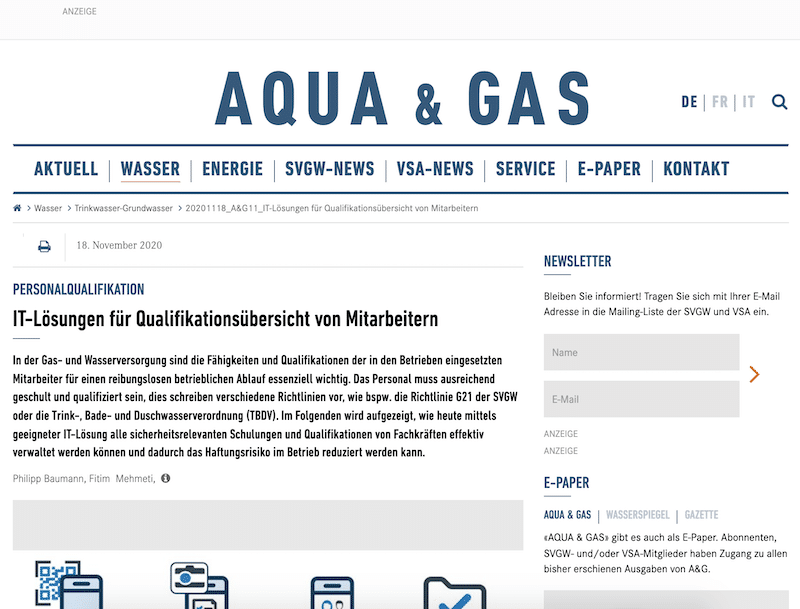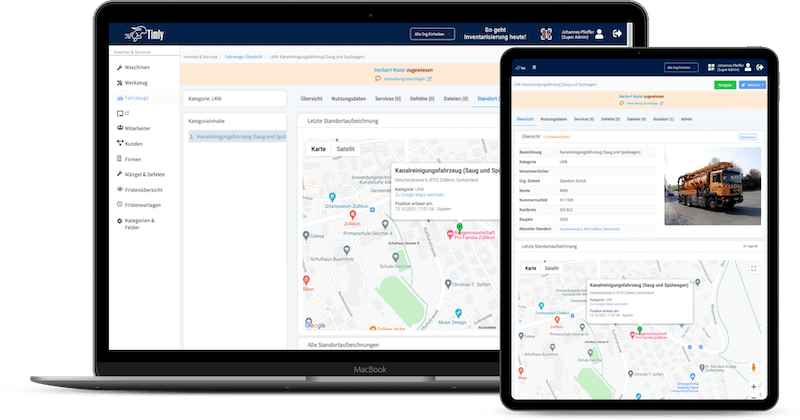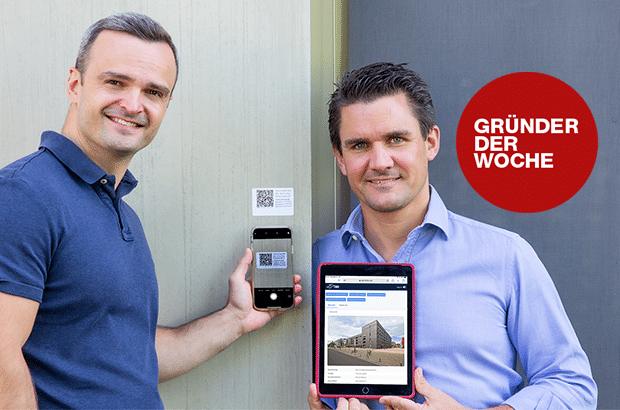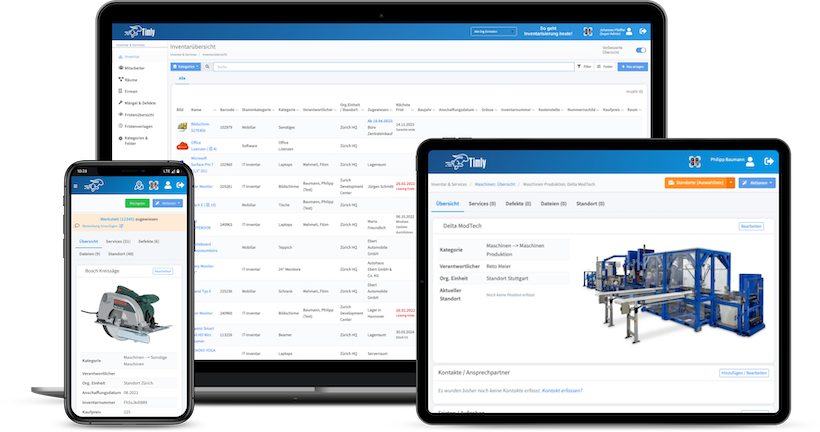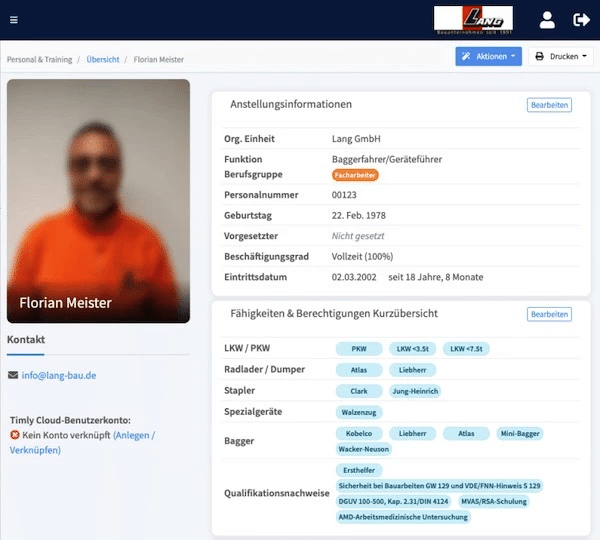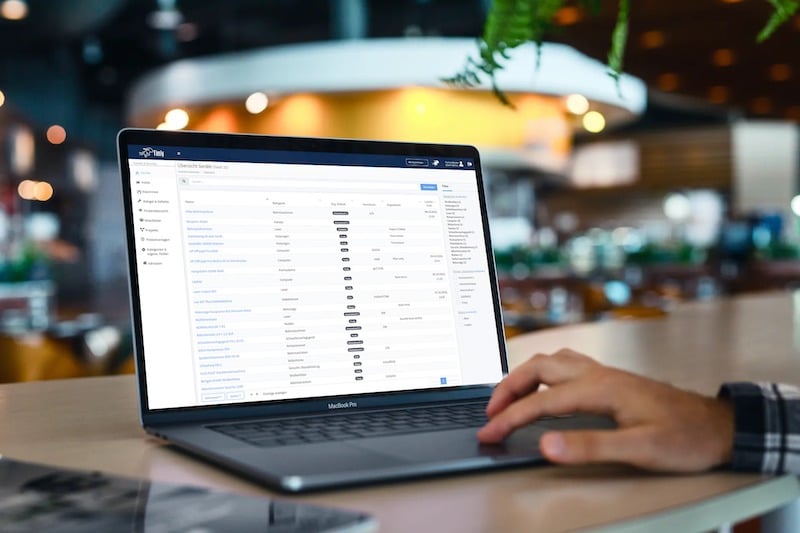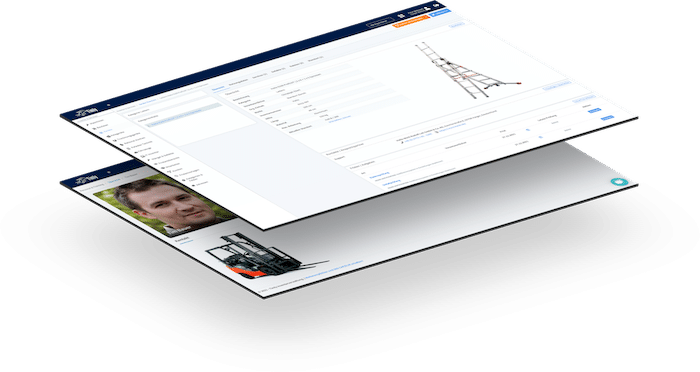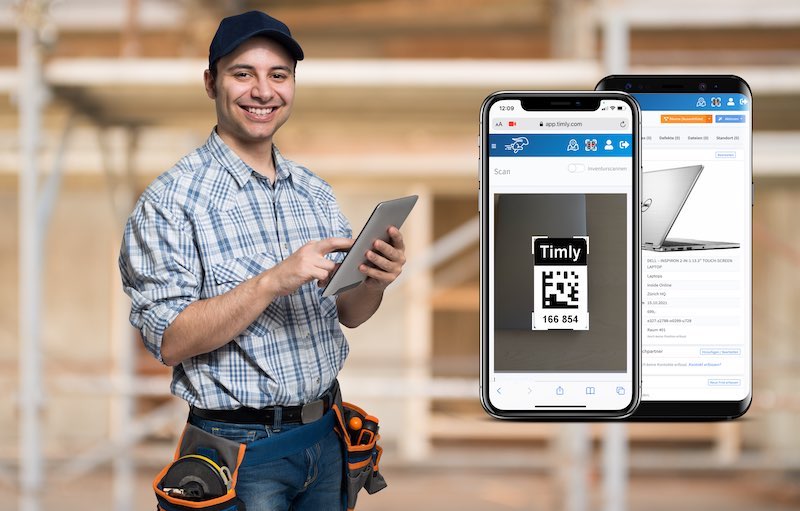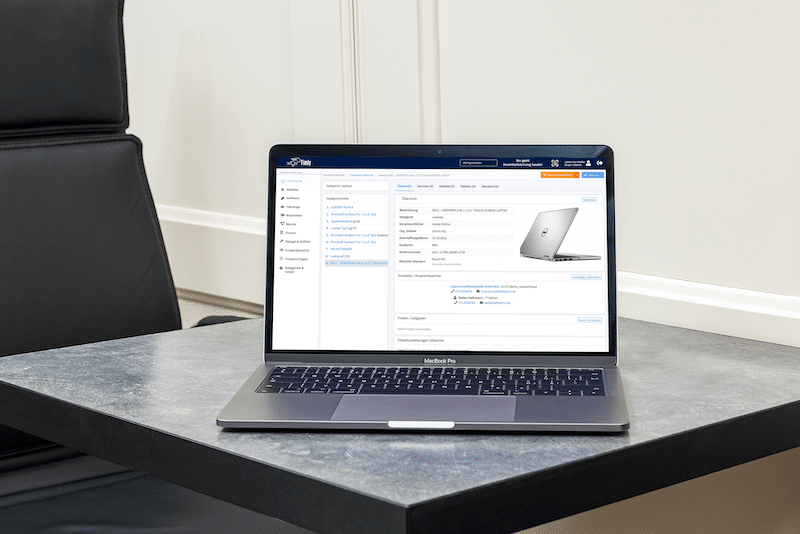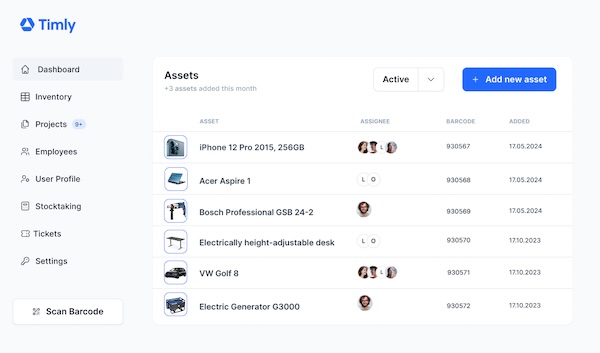
- Smooth Operations: Effective fleet management is essential for keeping business processes running smoothly.
- Simplified Tasks: Modern software helps tackle challenges like dispatching, maintenance planning, and record-keeping with ease.
- Real-Time Transparency: Cloud-based applications ensure that all necessary information is always accessible, offering tools like integrated calendars and ticket systems for better collaboration.
- What is Fleet Management?
- What Does a Fleet Manager Do?
- Fleet Management Software: Key Functions and Must-Have Features
- Fleet Management Solutions: Exploring Your Options
- Fleet Administration: Why Mobility Is a Must
- Fleet Planning: The Power of Information Exchange
- Automate Fleet Monitoring with IoT: Smarter, More Efficient Operations
- Fleet Optimization with Software: Driving Efficiency and Sustainability
- The Case for Holistic Inventory Management
- FAQs About Fleet Management
What is Fleet Management?
Fleet management becomes notably more efficient when all information is collected and accessible in real-time through a centralized system. In fact, fleet management software can deliver a lot of measurable benefits. According to G2, over 40% of logistics managers reported fewer driver safety incidents after adopting vehicle tracking systems. More than half of businesses saw improved customer service, while 55% managed to reduce fuel consumption. These impressive outcomes underscore the value of leveraging technology to streamline fleet operations.
Fleet management involves much more than simply keeping track of vehicles. It’s a complex responsibility that covers a range of important tasks that keep your fleet running smoothly, efficiently, and cost-effectively. While the scope of fleet management may seem straightforward, a closer look shows how extensive and detail-oriented this work can be.
1. Keeping Track of Documents
Every vehicle comes with a pile of paperwork that includes everything from purchase contracts and warranties to insurance policies and user manuals. Over time, you’ll add inspection certificates, repair records, and more. All these documents need to be organized, easily accessible, and stored securely.
2. A User-Friendly Scheduling System
3. Staying on Top of Maintenance
4. Managing Drivers
5. Making Checklists a Habit
What Does a Fleet Manager Do?
1. Coordinating Vehicle Use
2. Overseeing Maintenance and Repairs
3. Crunching the Numbers
4. Prioritizing Safety
5. Building Expertise
Fleet Management Software: Key Functions and Must-Have Features
Here’s a breakdown of the must-have features:
1. Support for Multiple Vehicle Types
2. Integration with Your Organization
Linking the software to your organizational structure is a game-changer. Assigning vehicles to specific departments, locations, or teams becomes much more straightforward. It helps create a clear picture of vehicle usage across the company.
3. Calendar Overviews and Automated Reminders
4. Built-In Reservation System
5. Driver Profiles
6. Document Digitization
Fleet Management Solutions: Exploring Your Options
When it comes to fleet management, there’s no one-size-fits-all option. Different businesses have different needs, and the right software depends on:
- The size of your fleet
- The complexity of your operations
- Your long-term goals
1. The Basics: Spreadsheets and Digital Calendars
However, this approach has limitations. Using multiple programs can quickly become messy, leading to confusion and inefficiencies. As your fleet grows, keeping everything organized across separate tools can become a challenge.
2. Dedicated Fleet Management Software
If you’re managing a larger fleet, a purpose-built fleet management system is the way to go. These applications are designed specifically for vehicle management and often include features like:
- Integrated maintenance schedules
- Automated reminders for key dates
- Booking and reservation tools
- Document storage for warranties, manuals, and more
While this software often requires upfront costs for licenses, training, and setup, the benefits usually make it well worth the investment. By streamlining processes and reducing manual effort, it saves time and minimizes errors, making fleet operations more efficient.
3. Specialized Scheduling Software
For businesses focused on transportation, scheduling software can help optimize route planning and driver assignments. These tools often come with features like:
- Interactive maps with detailed route information
- Driver time calculations
- Integration of maintenance schedules to avoid double-booking vehicles
This type of software is ideal for logistics and transport-heavy businesses but can be overkill for companies where transportation isn’t the core focus.
4. All-in-One Asset Management Software
For businesses with a diverse range of inventory—not just vehicles—modern asset management software offers the most flexibility. Solutions like Timly’s inventory software let you manage vehicles, tools, equipment, and more in a single platform. With customizable categories, you can tailor the system to your needs, ensuring that all relevant information is stored, from documents to maintenance schedules.
A few standout benefits of holistic software include:
- The ability to manage vehicles alongside other work equipment
- Simplified planning by integrating vehicle and equipment schedules
- Centralized management, reducing the need for multiple tools
This unified approach can streamline operations and make life easier for everyone, from fleet managers to field employees.

Fleet Administration: Why Mobility Is a Must
Access from Anywhere, Anytime
The SaaS Advantage
One of the best ways to enable mobile-friendly fleet management is through Software-as-a-Service (SaaS) solutions. With SaaS, the software runs on a secure cloud server, and users can log in from any internet-connected device. This approach offers several key benefits:
- Hassle-Free Administration: The provider handles updates and maintenance, so your team doesn’t have to worry about IT headaches.
- Enhanced Security: There’s no need to open your company network to external devices. SaaS solutions typically use robust encryption and authentication measures to keep data safe.
- Mobile Compatibility: Many SaaS platforms come with apps optimized for mobile use, ensuring a smooth experience even with complex systems.
Timely Updates
What to Look For
By embracing mobile-friendly and cloud-based solutions, fleet administration becomes more flexible, secure, and efficient. Wherever your vehicles or team members are, you’ll always have the tools to keep your fleet on track.
Fleet Planning: The Power of Information Exchange
Effective fleet planning thrives on seamless communication, but different working hours and shifting schedules can complicate things. While workshops and scheduling teams often operate during the day, vehicles in many industries are on the road 24/7. This is where a well-integrated fleet management system can keep everyone on the same page.
Accessible Tools for Everyone
Centralized Calendars for Better Scheduling
Ticketing Systems for Transparent Communication
A built-in ticketing system adds another layer of clarity. Here’s how it works:
- Task Assignment: Managers can create tickets for tasks like maintenance, repairs, or inspections and assign them to the right team.
- Real-Time Updates: Everyone involved can see the status of the ticket, ensuring transparency.
- Defect Reporting: Drivers can use the system to report issues, complete with photos and comments, so managers have all the information they need to take action.
Traceable Histories for Accountability
Applications like Timly take these capabilities even further by allowing users to upload images and detailed records to tickets. With instant notifications, managers are always informed when new tasks arise, ensuring nothing gets overlooked.
The Timly Software in Use

Optimized Device Management With Innovative Self-Inventory
SodaStream is the world market leader for water sparkling systems for domestic use and has a lot of IT equipment at its various locations. Many colleagues now work from their home offices. A digital solution for the efficient management of IT end devices became necessary...
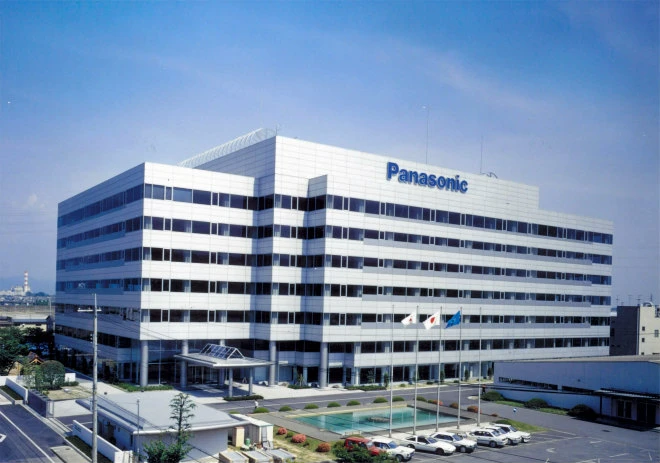
Panasonic x Timly: Driving Technological Innovation
One of the most remarkable aspects of human ingenuity is our ability to innovate. Innovation is embedded in the DNA of consumer electronics giant Panasonic, which has diversified into a number of sectors, from heavy industry to construction...
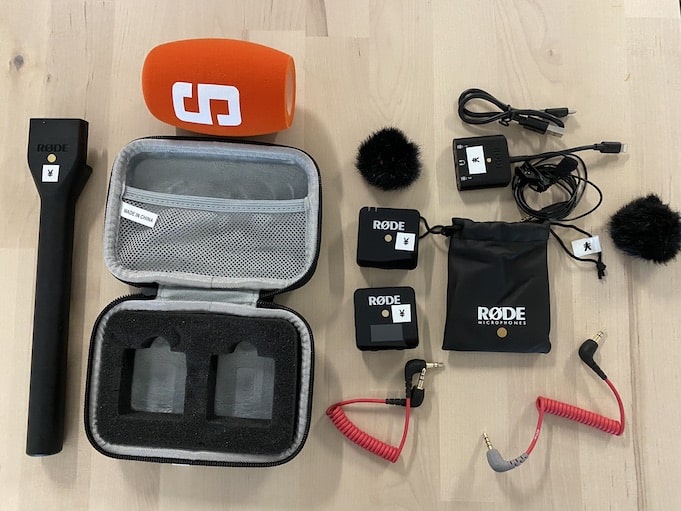
Manage Video Equipment Efficiently Without Much Effort
The Hamburg media company always does outstanding journalistic work and is characterized by independent reporting. In order to maintain journalistic quality, the teams work with highly specialized devices – these need to be managed efficiently...

Smart City Asset Management – Timly in Use at DIGOOH
The core business of DIGOOH Media GmbH in Cologne is to manage digital city light posters (DCLP) for outdoor use in various cities in Germany. The challenge here lies in making the client’s communication message always available at the right time, in the right place...
(No credit card required)
Automate Fleet Monitoring with IoT: Smarter, More Efficient Operations
What Is IoT in Fleet Management?
Key Benefits of IoT for Fleet Management
1. Real-Time Location Tracking
2. Telemetry Data Collection
IoT sensors can gather and share detailed telemetry data, including:
- Fuel consumption
- Engine performance
- Mileage
- Maintenance alerts
This data gives fleet managers a full view of vehicle health and usage.
3. Automated Fill-Level Monitoring
Need to track fuel or fluid levels? IoT sensors can handle that too, alerting you when levels are low and preventing unexpected downtime.
4. Seamless Integration with Fleet Management Software
When IoT devices are integrated with fleet management software, the possibilities expand. For example:
- Consumption data and performance metrics can be automatically logged.
- Maintenance schedules can adjust dynamically based on real-time vehicle data.
- Reports and analytics can be generated instantly to identify trends or inefficiencies.
Why Automating Fleet Monitoring Matters
IoT-enabled fleet monitoring reduces manual effort and minimizes human error, allowing businesses to manage their fleets more efficiently. The ability to collect, transmit, and analyze data in real time means fewer surprises, quicker responses to issues, and more strategic decision-making.
For businesses looking to stay ahead, IoT technology offers a clear path to smarter, semi-automated fleet management.
Fleet Optimization with Software: Driving Efficiency and Sustainability
How Software Enhances Fleet Operations
1. Simplified Scheduling
2. Easy Data Collection and Updates
3. Mobile Accessibility
4. Automation with IoT Sensors
Sustainability Through Smart Fleet Management
The Case for Holistic Inventory Management
Integrating fleet management into a broader inventory system can be a game-changer. Tools like Timly’s inventory software let businesses manage vehicles alongside other assets like tools and equipment. This unified approach offers key advantages:
- Streamlined planning and scheduling across all resources.
- A single platform for tracking maintenance and usage data.
- Simplified workflows, reducing the need for multiple specialized tools.
By treating fleet management as part of a larger asset management strategy, businesses can enhance productivity, reduce overhead, and achieve their sustainability goals more effectively.
FAQs About Fleet Management
Why Does Fleet Management Software Make Sense for Companies?
How Can Employees Access Fleet Software While on the Move?
Which IoT Sensors Work Best for Fleet Management?
Are Cloud Applications Secure for Processing Company Data?
Recommended for you:
Book an online demo - free and without obligation - or create your free trial account directly.






